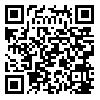Objectives: Regarding the importance of craving in the persistence of addiction, this study has been carried out with the aim of determining the differences between the two distinguishable groups of heroin addicts: responders and non-responders to craving cues. Method: In a case-control study, 26 male intravenous heroin addicts were selected from among non-treatment seeker abusing addicts in Tehran, and entered the study after a semi-structured interview and based on DSM-IV criteria. A demographic questionnaire and Addiction Severity Index were administered to all subjects before imaging. Each of the subjects underwent functional imaging with visual cue-induced craving, using functional magnetic resonance imaging (fMRI). Subjective reports of craving were evaluated after the imaging, using Visual Analog Scale (VAS). Also, 15 normal individuals with no history of drug abuse underwent fMRI as the control group. Blood-oxygen-level-dependent (BOLD) signal obtained during fMRI was analyzed using FSL. Results: There was a significant difference in brain activation between responder and non-responder groups (p<0.01). Responder subjects (craving higher than 70 in VAS) demonstrated cortical activation in the following areas: left anterior cingulate gyrus, left anterior rectus gyrus, left anterior mid-orbital frontal gyrus (Broadman areas 24, 11 and 25), left nucleus accumbens (Broadman area 34), and left anterior frontal superior gyrus, right anterior superior medial frontal gyrus, and right anterior middle frontal gyrus (Broadman areas 8, 10 and 9). Non-responder subjects (craving less than 30 in VAS) showed no significant difference in brain activation with normal people. According to FEAT analysis the score of substance abuse in Addiction Severity Index (ASI) has a significant correlation with brain activation in the responder group (P<0.01). Conclusion: Subjects who do not respond to drug cues with craving, like the normal group, do not show activation in related areas in fMRI. In the process of inducing heroin craving through related cues in substance abusers, the same areas involved in reward/punishment process get activated. The limbic/ paralimbic and pleasure/avoidance systems participate in inducing heroin craving.
Type of Study:
Original Research |
Subject:
Psychiatry and Psychology Received: 2009/01/24 | Published: 2008/11/15

 , Arian Behzadi
, Arian Behzadi 
 , Habib Ganjahi
, Habib Ganjahi 
 , Azarakhsh Mokri
, Azarakhsh Mokri 
 , Hanieh Edalati
, Hanieh Edalati 
 , Morteza Bakhtiari
, Morteza Bakhtiari 
 , Naghmeh Rabiee
, Naghmeh Rabiee 
 , Mohammad Ali Oghabian1
, Mohammad Ali Oghabian1 



